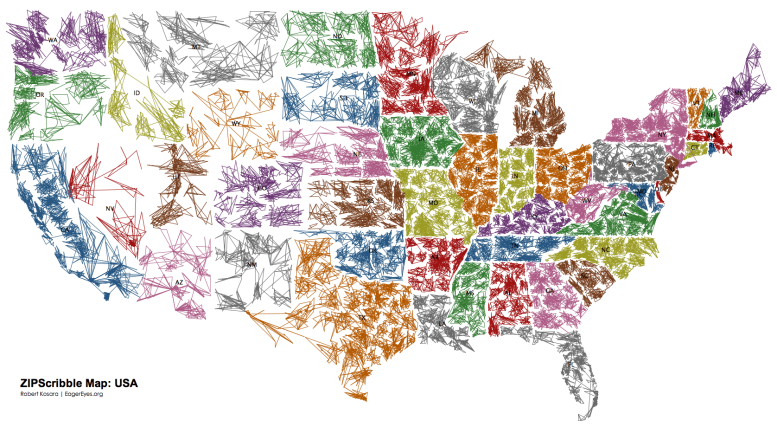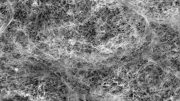While most people think that ZIP codes were originally created randomly, there is actually an order to the US mail system. Since it turns out that it has a branching structure, it implies that it has a fractal dimension. Samuel Arbesman of Wired’s Social Dimension used the ZIPScribbles images created by Robert Kosara to calculate the fractal dimension of the US ZIP code system.
As an analogy, let’s think about the human circulatory system, which fills a three-dimensional space using tubes that are essentially two-dimensional. Since it doesn’t really obey the rules that generate regular shapes, it must have a fractal dimension.
In case of the ZIP code system, the codes themselves fill up a space but are built using simple lines. It must also have a fractal dimension. The ZIPScribbles images connect the coordinates of sequential ZIP codes, which reveal the geographical hierarchy of the system. ZIP codes divide the US population first into states, then into smaller regions. Arbesman used a simple box-counting method, which entails seeing how many boxes in a series of ever-smaller grids are required to cover a shape. He came up with 1.78. Kosara calculated the fractal dimension of other countries’ mail systems.
The overall shape that ZIP codes describe is between a line and a two-dimensional plane, though it’s closer to a two-dimensional surface. Fractals are easy to find all around us, inside our bodies, in the shape of trees, snowflakes, and coastlines. Engineered systems, like the ZIP code system, once they acquire a certain level of complexity, can also take on the properties of something that’s a bit more organic.










The ZIPScribbles images connect the coordinates of sequential ZIP codes, which reveal the geographical hierarchy of the system.